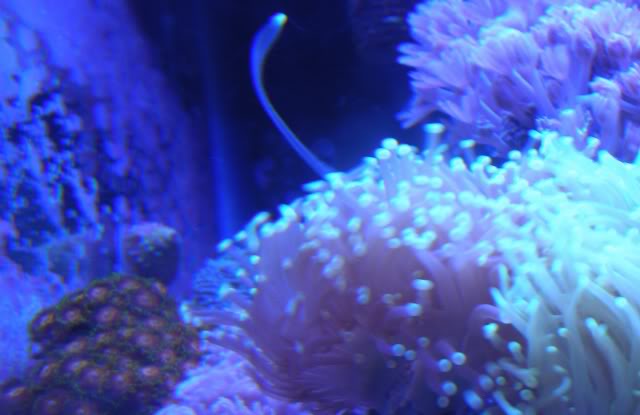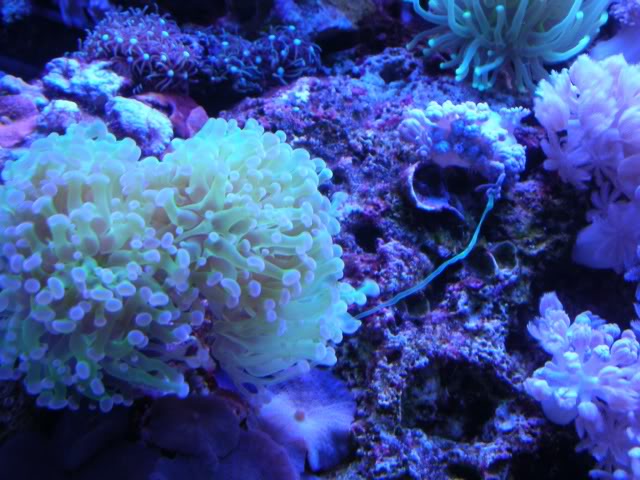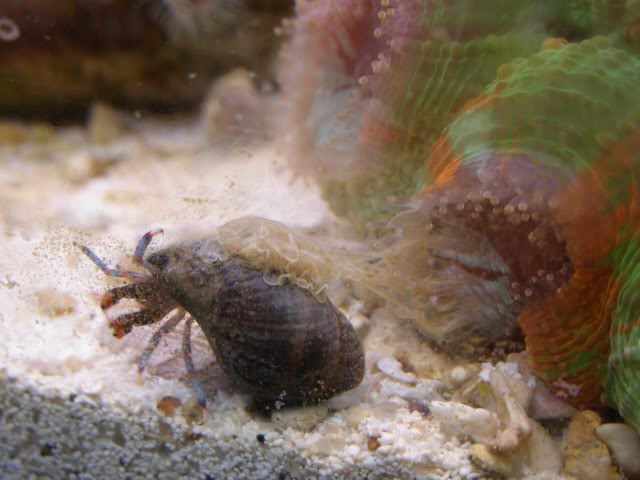You are using an out of date browser. It may not display this or other websites correctly.
You should upgrade or use an alternative browser.
You should upgrade or use an alternative browser.
Torch Coral and proximity to polyps
- Thread starter TheTrav13
- Start date
The friendliest place on the web for anyone with an interest in aquariums or fish keeping!
If you have answers, please help by responding to the unanswered posts.
If you have answers, please help by responding to the unanswered posts.
Torch corals are capable of stinging other corals and, as with other euphyllia species of coral, can be considered 'aggressive' in that regard.
They can pack a powerful sting and their stinging sweeper tentacles can have a reach of 6", sometimes a little more.
The zoanthids at the lower left were too close to these torch corals and eventually had to be relocated to a different spot in the tank. You can one of the torch's sweeper tentacles trying to seek out other corals.


They can pack a powerful sting and their stinging sweeper tentacles can have a reach of 6", sometimes a little more.
The zoanthids at the lower left were too close to these torch corals and eventually had to be relocated to a different spot in the tank. You can one of the torch's sweeper tentacles trying to seek out other corals.


How will you know if they get stung?
A torch coral can kill a zoathid polyp. Upon contact the zoa will likely close up and retract when the torch's sweeper tentacle comes in contact with it.
If contact continues the torch's nematocysts will continuously sting the zoanthid. If contact continues the zoathid will become dissolved resulting in the demise of that particular polyp.
Here's a euphyllia stinging some nearby puslating xenia:


jcarlilesiu
Aquarium Advice Addict
Jeez. I had no idea, and that is a frogspawn? How come it doesn't sting the mushrooms under it, and how often do they release their sweeper tentacle?
Their stinging sweepers are not controlled. They just wave in the current. Its a method for the coral to lean the territory around it so that it can expand.
Many times in our tanks, the flow makes the sweepers go the same direction consistently, so some coral can get very close and not be in danger. If the sweepers hit the mushrooms, they would be just as unhappy.
My Galaxea used to have sweepers every night. I got rid of it because it simply demanded too much space.
How come it doesn't sting the mushrooms under it, and how often do they release their sweeper tentacle?
The height of the euphyllia (due to the branching skeleton and placement) as well as water flow made it somewhat harder to reach the mushrooms. The mushrooms however did spread to higher ground and would occasionally get zapped but not destroyed (the sweepers would more or less brush against them rather than adhere to them as was the case with the xenia).
I think the extention of sweeper tentacles were prompted by the proximity of nearby corals as well as detection of the 'chemical signature' of newly added corals or coral frags elsewhere in the tank. My torch coral seldom extends sweepers these days, however here's a photo from just the other night of one my acan's deploying stinging mesenterial filaments on a hermit crab (it was able to free itself after half an hour, unscathed):

From what I have observed, corals (at least some kinds and to some degree) have the some ability to control the direction and length of their sweepers. I've seen them make 'course corrections' and probing motions. Contact with other corals seems intentional rather than random.
...is a frogspawn?
I'm of the opinion that it is not (I have a frogspawn and it looks different from this one). It is a euphyllia with some hammer and frogspawn traits.
Similar threads
- Replies
- 7
- Views
- 773
- Replies
- 3
- Views
- 562
- Replies
- 8
- Views
- 2K
Latest posts
-
-
Little Back Story on Az Fish Rescue Pendley's Plentiful Pets
- Latest: Andy Sager
-
-
-
-
-
-
